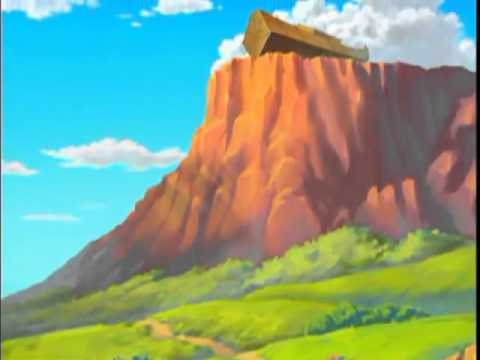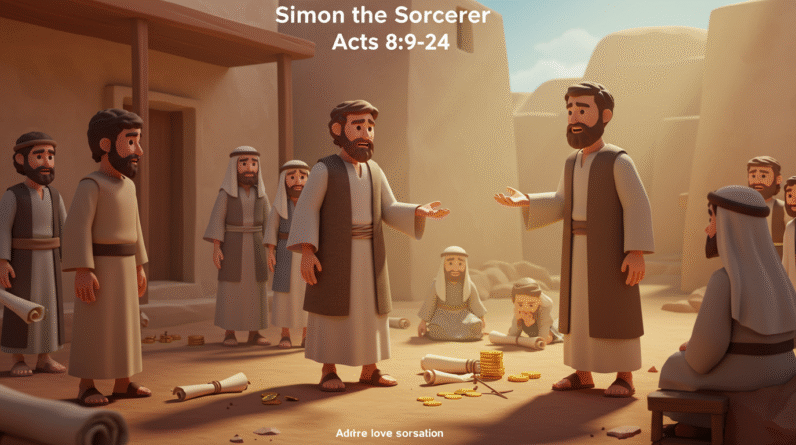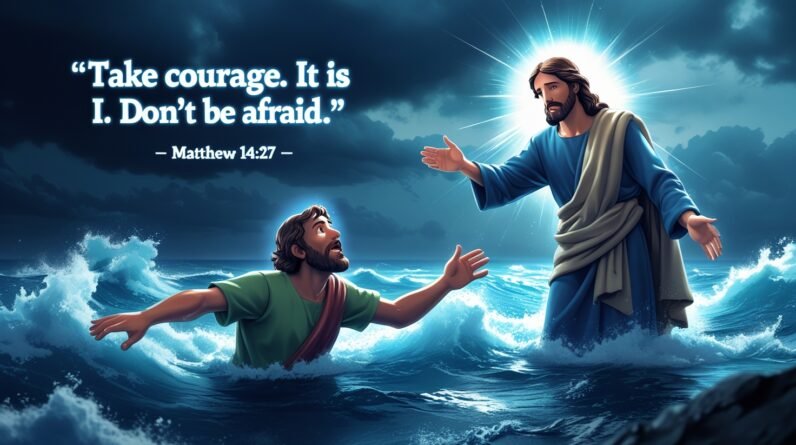In the article “Worship of Jehovah and Idols Made of Stone,” you will learn about the creation of the earth and how God filled it with vegetation and animals before creating Adam and Eve. However, Adam and Eve sinned, leading to their expulsion from Eden. The story continues with the birth of their two sons, Cain and Abel, and Cain’s jealous act of killing his brother. It goes on to explore the different generations of humans, some worshipping Jehovah while others turned to idols made of stone or wood. The article also delves into the story of Noah, who pleads with God to spare mankind and is commanded to build an ark and bring two of every animal on board. The narrative culminates in the rain lasting for forty days and forty nights, ultimately subsiding, and Noah and his family opening the ark to see the earth again.

This image is property of i.ytimg.com.
The Creation of Adam and Eve
God created the earth and filled it with vegetation and animals of all kinds and species. After this, God created two human beings, Adam and Eve, who were placed in the Garden of Eden.
God’s creation of the earth
Before creating Adam and Eve, God created the earth, filled it with lush vegetation and diverse animals. Every corner of the earth was carefully crafted by God, showcasing His supreme power and creativity. From towering mountains to sparkling rivers, the earth was a masterpiece that served as a perfect habitat for all living creatures.
Creation of Adam and Eve
In His own image, God created Adam and Eve. He breathed life into them and entrusted them with the responsibility of tending to His creation. Adam and Eve were given free will and were placed in the Garden of Eden, where they could enjoy the abundant blessings of the earth and have a personal relationship with God.
Life in the Garden of Eden
The Garden of Eden was a paradise on earth, where Adam and Eve lived in perfect harmony with each other and with God. The garden was filled with an abundance of fruit trees and provided everything they needed for sustenance. They walked and talked with God and had an intimate connection with Him. Life in the Garden of Eden was idyllic, free from pain, fear, and suffering.
The Sin of Adam and Eve
However, Adam and Eve’s perfect existence in the Garden of Eden was marred by disobedience and sin. Tempted by the serpent, they ate from the forbidden tree of knowledge of good and evil, which God had specifically warned them against. This act of disobedience caused them to be cast out of the garden and introduced sin and its consequences into the world.
Adam and Eve’s disobedience
Adam and Eve’s disobedience stemmed from their desire to be like God, to have the knowledge of good and evil. In this act of defiance, they chose to prioritize their own desires over God’s commandment. This disobedience not only brought separation between them and God, but it also had far-reaching consequences for humanity.
Expulsion from the Garden of Eden
As a result of their sin, God expelled Adam and Eve from the Garden of Eden. They were banished from the paradise they had known and were subjected to a world filled with pain, toil, and suffering. The consequences of their disobedience affected not only them but also all future generations.
Cain and Abel
After their expulsion from the Garden of Eden, Adam and Eve had two sons, Cain and Abel. The story of Cain and Abel illustrates the destructive power of jealousy and the consequences of uncontrolled anger.
Birth of Cain and Abel
Cain and Abel were the first two children of Adam and Eve. Cain, the older brother, became a farmer, while Abel became a shepherd. Both Cain and Abel presented offerings to God, but Abel’s offering was accepted while Cain’s was not. This rejection fueled Cain’s jealousy and anger, ultimately leading to tragic consequences.
Cain’s jealousy and murder of Abel
Out of envy and anger, Cain killed his brother Abel. His actions showed the potential darkness that resided in humanity and the devastating consequences of unchecked emotions. This act of violence marked the first instance of murder in human history and brought about the punishment of Cain.
Various Human Tribes and Cities
As generations passed, humans populated the earth and formed diverse societies. Some lived in nomadic tribes, while others settled in cities governed by powerful leaders. Within these societies, some worshipped Jehovah, the God who had created them, while others turned to idol worship and worshipped gods made of stone or wood.
Different human societies
Human societies developed in various ways, depending on their cultural, geographical, and societal influences. Some societies thrived on agriculture and traded goods, while others focused on hunting and gathering. The variety in human societies showcased the adaptability and diversity of humanity.
Worship of Jehovah and idol worship
While some chose to worship Jehovah, the one true God, others turned to idol worship. Idol worship involved worshiping gods made of stone or wood, or even celestial bodies such as the sun, stars, and moon. This contrast in worship reflected the spiritual choices of individuals and showed the divergent paths that humans could take.
Noah’s Encounter with God
Noah, a righteous man in the eyes of God, found favor with Him. One day, while tending to his flock on a hill, Noah had a profound encounter with God.
Noah’s presence on a hill with his flock
Noah, a humble and faithful servant of God, spent his days tending to his flock on a hill. It was during one of these routine days that God chose to reveal His plan to Noah.
God’s observation of human wickedness
God, in His infinite wisdom, observed the wickedness that had spread across humanity. He saw how violence and sin had consumed the earth, and He resolved to take action.
Noah pleads for more time
Upon witnessing the wickedness of humanity, Noah pleaded with God for more time. He asked for a delay in the judgment that God was about to unleash, hopeful that there might still be righteous individuals or communities that could be saved.
The Building of the Ark
God heeded Noah’s plea and instructed him to build an ark. Noah diligently followed God’s instructions and embarked on the monumental task of constructing an enormous vessel.
God’s instruction to Noah
God provided Noah with specific instructions on how to build the ark. He detailed the dimensions, materials, and design of the vessel, ensuring that Noah had everything he needed to bring God’s plan to fruition.
Construction and preparation of the ark
Noah, together with his family, labored tirelessly to construct the ark. They gathered the required materials, meticulously followed God’s instructions, and prepared themselves for the impending flood.
Gathering of animals
As part of God’s plan to preserve life, Noah was instructed to bring two of every kind of animal into the ark. Gathering the animals required patience, determination, and trust in God’s provision.
The Great Flood
After Noah and his family and the animals were safely inside the ark, the rain began. Forty days and forty nights of torrential rain covered the earth in water, bringing about the great flood.
Forty days and forty nights of rain
The floodwaters poured down from the heavens, relentless and unyielding. The rain persisted for a span of forty days and forty nights, inflicting destruction upon the earth.
Covering the earth in water
As the rain continued to fall, the floodwaters engulfed the earth. Landmarks disappeared beneath the rising tides, and the once-familiar landscape transformed into a vast, watery expanse.
The Subsiding of the Waters
As suddenly as the flood came, it began to subside. The ark, guided and protected by God, found rest on the mountains of Ararat.
The ark resting on the mountains of Ararat
After enduring the stormy waters, the ark came to rest on the mountains of Ararat. This marked the turning point in Noah’s journey and provided a moment of hope and relief for him and his family.
Sending out the raven and the dove
To ascertain whether the waters had receded, Noah sent out a raven and a dove. These birds acted as messengers, exploring the surroundings and returning with information.
The Dove and the Olive Branch
The dove returned to Noah with an olive branch in its beak. This was a sign that the rain had ceased and that new opportunities and renewed life were on the horizon.
Indication of the rain’s end
The olive branch brought hope and reassurance to Noah and his family. It signified the end of the rain and the beginning of a fresh chapter for humanity.
The Opening of the Ark
Once the earth was renewed and dry, Noah and his family, along with the animals, left the ark. They stepped onto the cleansed earth, ready to embrace the future and fulfill God’s plan.
Noah’s family and the animals leaving the ark
With the floodwaters subsided, Noah’s family and the animals disembarked from the ark. They eagerly stepped onto the new land, grateful for the second chance they had been given.
Observing the renewed earth
As Noah and his family stood on the renewed earth, they witnessed the beauty and splendor of God’s creation once again. The overwhelming sense of awe and gratitude filled their hearts as they embarked on a new beginning.
In conclusion, the story of Noah and the ark sheds light on the power of faith, obedience, and God’s redemptive plan. It serves as a reminder of the consequences of sin, the importance of trust in God, and the promise of renewal. Throughout the narrative, we see how God’s grace and mercy worked hand in hand with human responsibility, demonstrating His unwavering love for His creation.







